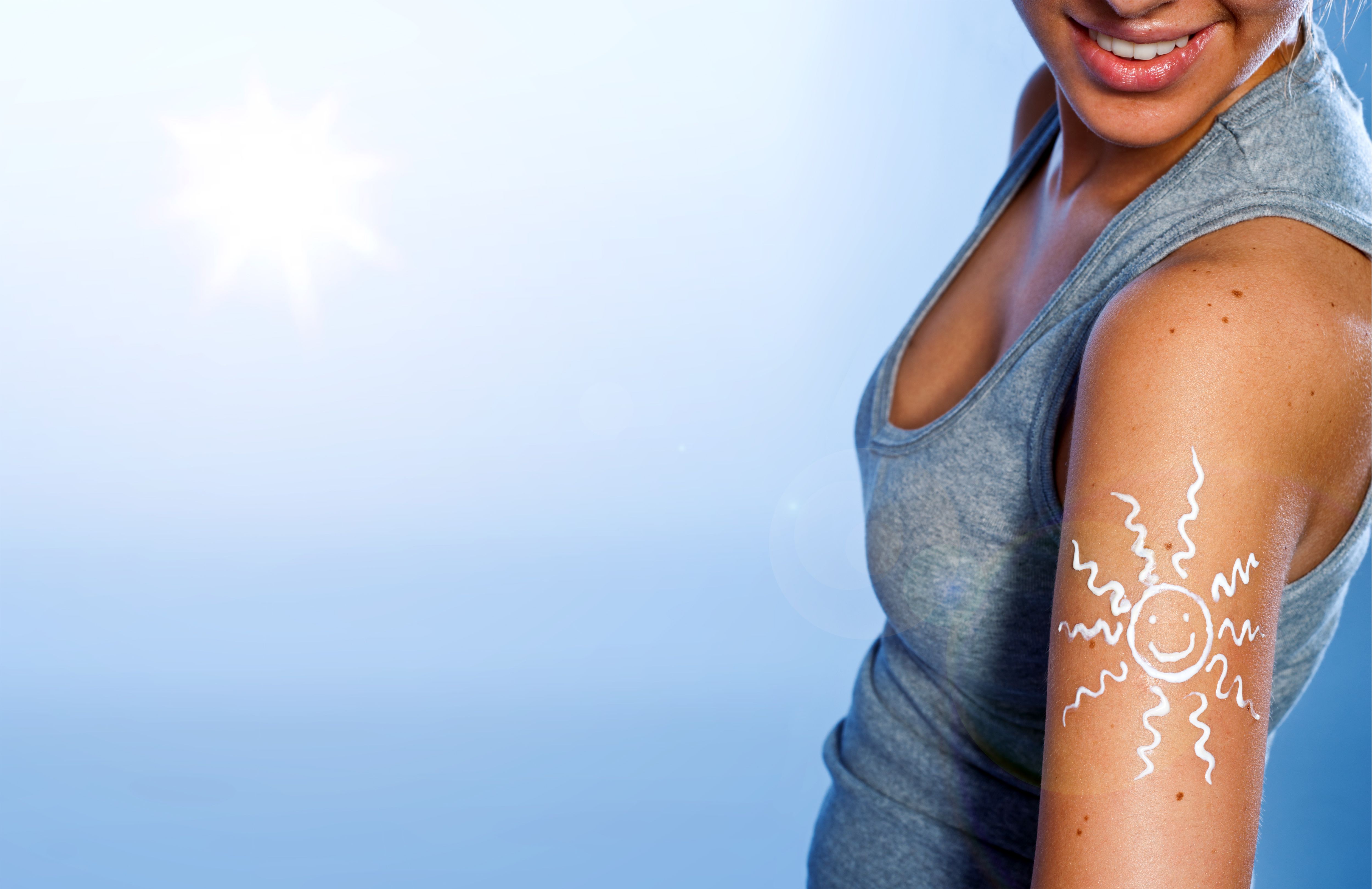News
Article
Examining Skin Cancer Beliefs and Behaviors Among Hispanic People in Florida, Puerto Rico
Author(s):
A study found Hispanic people in Tampa, Florida and Ponce, Puerto Rico are prone to sunburns but lack sun safety habits, putting them at higher risk for skin cancer.
Sun block on arm | Image Credit: bertys30 - stock.adobe.com

In a randomized controlled prevention trial, people who self-identified as Hispanic from Tampa, Florida and Ponce, Puerto Rico presented high rates of recent sunburn but modest levels of risk severity and low-levels of sun-protective behaviors, increasing the population’s risk of skin cancer.
For the past several decades, skin cancer rose in US Hispanic populations, ranging from basal cell carcinoma, squamous cell carcinoma, and the most lethal, melanoma. Overall, there has been an estimated 300% increase in skin cancer diagnosis from 1974 to 2005, with melanoma rising 0.5% annually between 2000 to 2019. The present trial set out to investigate any disparities stemming from patient care and clinician awareness about skin cancer risk in Hispanic populations.
The study utilized data from September 2018 to January 2020, categorizing English-preferred Hispanic people to Spanish-preferred. Baseline questionnaire A included participant age, sex, marital status, education level, family history of melanoma, skin cancer and other cancers, paid/unpaid work outdoors, health literacy, health numeracy, and untanned skin color. Baseline questionnaire B contained phenotypic traits such as hair color, eye color, freckling, burnability after acute sun exposure, and ability to tan after chronic sun exposure.
Participants were required to answer about primary preventions they may do to minimize sun exposure. Prevention activities ranged from the time spent outside from 10:00 am to 4:00 pm on weekdays and weekends, frequency of intentional outdoor tanning, number of sunburns, number of tanning bed sessions, and frequency of following each protective behavior such as sunscreen, sunglasses, hats, shirts, or shade coverage. All randomized survey data was controlled with R Software, RStudio, and statistical analysis system.
Study results focused on the behaviors, beliefs, distress, and worry in the overall research population. On average, a low number of participants reported skin cancer worry (mean [SD], 1.99 [0.83]) with only 22.6% claiming sunscreen or hat use. However, covering arms from sun exposure with sleeved shirts occurred in 61.2%, sunglasses were worn by 47.9%, and shade seeking was done by 40.8%.
Statistically significant primary preventions were identified between Spanish-preferring Tampeños (participants from Tampa), English-preferring Tampeños, Spanish-preferring Puerto Ricans, and English-preferring Puerto Ricans. Data depicted Spanish-preferring Tampeños with higher weekday sun exposure (mean, 1.99) compared to English-preferring Tampeños (mean, 1.49; P < .01). English and Spanish-preferring Puerto Ricans had less history receiving sunburn (16.2%, 24%, respectively) than English-preferring Tampeños (35.9%). Puerto Ricans preferring Spanish had less participants who wear sunglasses (40.2%) than English-preferring Tampeños (54.4%). Spanish-preferring Puerto Ricans were also less likely to use sunscreen (15.4%) compared with English-preferring Tampeños (29%).
Spanish-preferring Puerto Ricans experienced higher levels of worry about skin cancer as well as recent concern about skin cancer (mean, 1.33, 1.48, respectively) than English-preferring Tampeños (mean, 1.21, 1.27). Overall, Spanish-preferring Puerto Ricans and Spanish-preferring Tampeños had the highest efficacy responses (mean, 3.57 and 3.41, respectively) compared with English-preferring Tampeños (mean, 3.05).
Study limitations included the lack of generalizations able to be made since Hispanic populations are broadly defined. Of the participants, Spanish-preferring Tampeños were the most diverse, ranging from Central or South Americans, Cubans, and Mexicans. Study findings had limited representation of Hispanic men with low education levels, health literacy, and health numeracy. The authors noted that Hispanic people who identify with a Puerto Rican identity are the most relevant population applicable to the study. Geographical location was also a study limitation due to the hurricane activity, conceivably affecting usual sun-related activities and prevention behaviors.
Overall, most participants exhibited high chances of receiving sunburn with low routine efforts of sun protective behaviors. Further education on skin cancer risk targeted for English-speaking and Spanish-speaking populations will utilize both avenues of communication.
Reference
Lacson JCA, Soto-Torres B, Sutton SK, et al. Skin cancer prevention behaviors, beliefs, distress, and worry among hispanics in Florida and Puerto Rico. BMC Public Health. 2023;23(1):2234. doi:10.1186/s12889-023-17039-y




